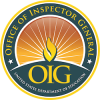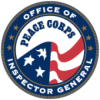
12,633
Open Recommendations
Open Recommendations
Age of Recommendations
3K Open Less Than 1 Year
6K Open Between 1-5 Years
2K Open More Than 5 Years
Date
Federal OIG
Report Title
Type: Type

Department of Health & Human Services OIG
Medicare Advantage Compliance Audit of Specific Diagnosis Codes That Humana Health Plan, Inc., (Contract H2649) Submitted to CMS
Type:
Audit

Department of Health & Human Services OIG
Medicare Advantage Compliance Audit of Specific Diagnosis Codes That HealthAssurance Pennsylvania, Inc (Contract H5522) Submitted to CMS
Type:
Audit

Department of Education OIG
Florida Department of Education’s Administration and Oversight of Emergency Assistance to Nonpublic Schools Grant Funds
Type:
Other

Federal Deposit Insurance Corporation OIG
Conflicts of Interest in the Acquisition Process
Type:
Inspection / Evaluation

Department of Education OIG
Des Moines Independent Community School District’s Use of Elementary and Secondary School Emergency Relief Grant Funds
Type:
Other

Peace Corps OIG
Audit Report: Oversight and Monitoring of Peace Corps’ Domestic Awarded Contracts Audit
Type:
Audit

